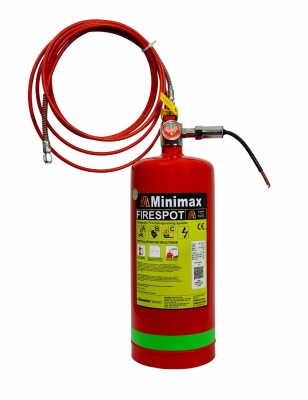FIRESPOT® Panel Protection System

| Specifications | 2 kg | 4 kg |
| Working Temperature °C | -30 °C to +60 °C | |
| Burst Pressure | 55/80 bar min., 110 bar (actual) approx | |
| Cylinder Testing Pressure | 35 bar for 30 sec. | |
| Operating Pressure | 8 bar | |
| Propellant | Dry Nitrogen | |
| Charge | Grenoz® 1230 / FK 5-1-12 | |
| Tube | UL approved Polyamide tube | |
| Accessories | Pressure Switch, GSM Dialler, Audio Visual Hooter | |
| System Approval | National Test House, Govt. of India Laboratory | |
All the commercial and industrial premises have panels and cabinets installed inside dedicated rooms. An unprecedented fire can cause heavy downtime and huge commercial impacts. Developed and manufactured by Gunnebo India, FIRESPOT® panel protection system is a specially designed self-actuating fire suppression system for special hazards in enclosed cabinets. This pre-engineered system is activated by a pressurized heat sensing tube which ruptures at the spot where fire occurs and suppresses the fire at its origin.
FIRESPOT® Panel Protection System is the most effective and reliable product for protection of enclosed panels or cabinets from fire. The system is approved by National Test House, Central Govt. testing Laboratory of India.
Ideal applications for system installation are Main LT Panel, HT Panel, MCC and Switchgear Panels, Engine compartments of vehicles, Computer Server racks, UPS and Battery Enclosures, HUB and Router Cabinets, Underground cable tracks, overhead trays, Relay panels etc.
Look For More
FAQ's
- Class A, B and C Fire Hazard – Fire Extinguisher within 15 m travel distance.
- Class D, F and Special Fire Hazard – Fire extinguisher within 10 m travel distance.





